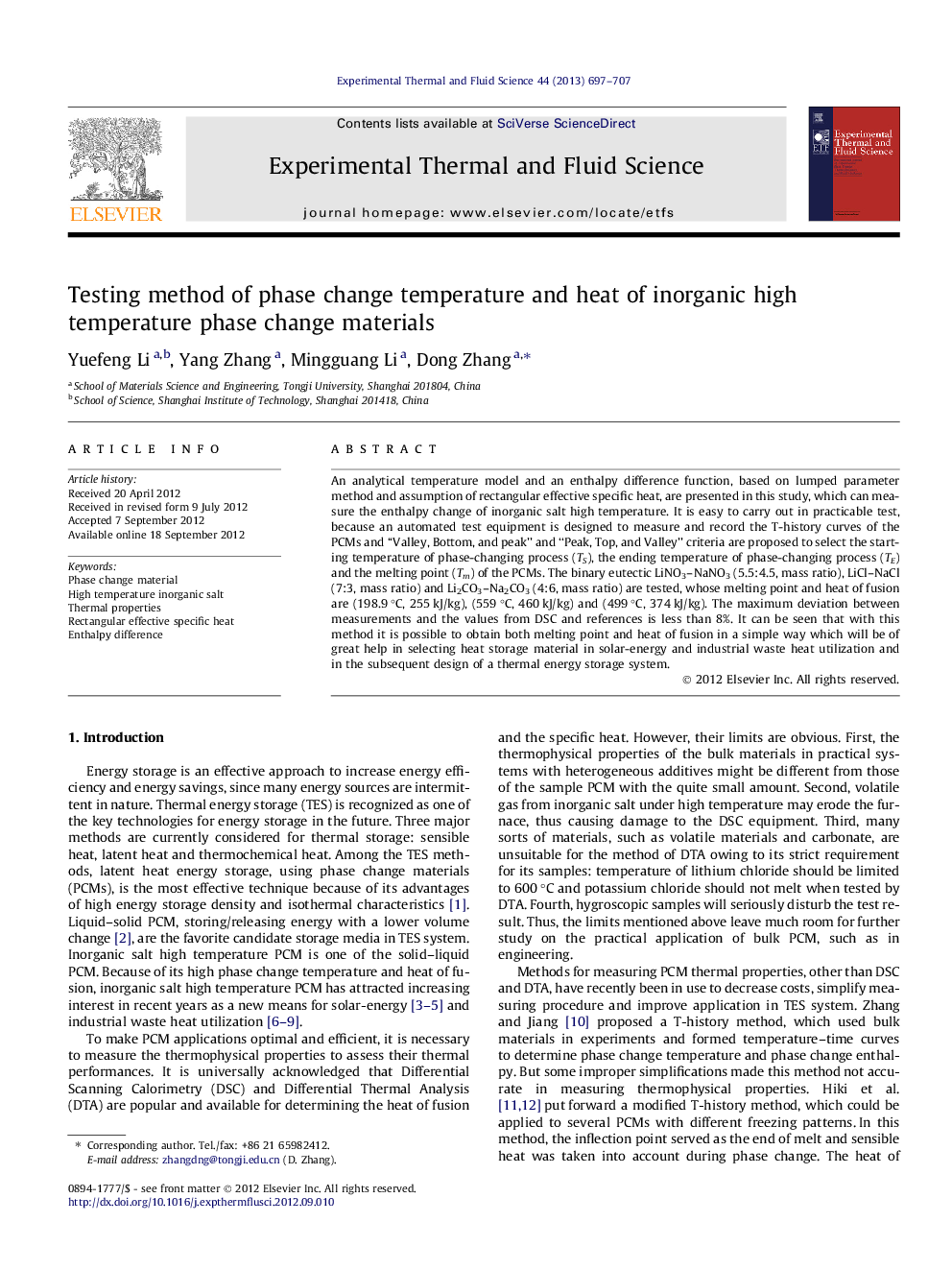| Article ID | Journal | Published Year | Pages | File Type |
|---|---|---|---|---|
| 651559 | Experimental Thermal and Fluid Science | 2013 | 11 Pages |
An analytical temperature model and an enthalpy difference function, based on lumped parameter method and assumption of rectangular effective specific heat, are presented in this study, which can measure the enthalpy change of inorganic salt high temperature. It is easy to carry out in practicable test, because an automated test equipment is designed to measure and record the T-history curves of the PCMs and “Valley, Bottom, and peak” and “Peak, Top, and Valley” criteria are proposed to select the starting temperature of phase-changing process (TS), the ending temperature of phase-changing process (TE) and the melting point (Tm) of the PCMs. The binary eutectic LiNO3–NaNO3 (5.5:4.5, mass ratio), LiCl–NaCl (7:3, mass ratio) and Li2CO3–Na2CO3 (4:6, mass ratio) are tested, whose melting point and heat of fusion are (198.9 °C, 255 kJ/kg), (559 °C, 460 kJ/kg) and (499 °C, 374 kJ/kg). The maximum deviation between measurements and the values from DSC and references is less than 8%. It can be seen that with this method it is possible to obtain both melting point and heat of fusion in a simple way which will be of great help in selecting heat storage material in solar-energy and industrial waste heat utilization and in the subsequent design of a thermal energy storage system.
► An analytical temperature model and an enthalpy difference function are presented. ► A new experimental setup was devised to measure automatically the T-history curves of PCM. ► Based on some criteria, both melting point and heat of fusion of PCM are determined. ► Three PCMs are measured and the results are coherent with the reference value. ► It is a simple way to select heat storage material in solar-energy utilization.
